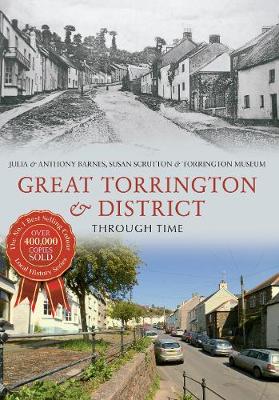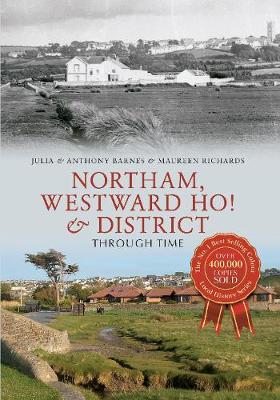Through Time
2 total works
Great Torrington & District Through Time
by Julia Barnes, Anthony Barnes, and Susan Scrutton
Published 15 June 2014
Great Torrington, or Cheping Torrington as it was once known (Chipping being the old name for market) was a considerable town, even in medieval times. It grew steadily from its agricultural roots through an industrial phase and was at the centre of road, canal and railway links. In Victorian times it had mills for corn, sawmills, grist mills and tucking mills, lime kilns and a glove-making factory, which employed 1,000 people, mostly in their own homes. Then there was a fell mongers and skivers works for curing the chamois leather to supply the glove factory. In the twentieth century a giant milk and butter processing plant and glass works were built here. One of Devon's largest land owners, the Rolles, made their home here in the grandest house in North Devon, Stevenstone, and they still live in the area at Heanton Satchville. Further back in history, the town was the scene of a bloody battle during the Civil War, and must be the only town in England to have had its church accidentally blown up by gunpowder kegs when over 200 prisoners locked up inside killed. Many artefacts from Torrington's colourful past can still be found here: the castle walls, built first in the thirteenth century. The remains of the canal, built without act of Parliament by John Rolle, in 1823, has been preserved by the Torrington Commoners and makes an attractive walk alongside the River Torridge. Then there was an early narrow gauge railway built to bring china clay from the pits at Peters Marland to be distributed to the china companies in the Midlands.
Northam, Westward Ho! & District Through Time
by Anthony Barnes, Julia Barnes, and Maureen Richards
Published 15 July 2013
The Manor of Northam dates back to the Norman invasion and is well recorded in the Domesday Book, being part of lands owned by a Saxon Lord called Bristric, and this appears to be the first recorded evidence of what was in the area. There is evidence of prehistoric settlements and much evidence during the Saxon era, when Vikings raided the area. Westward Ho! has its drowned forest and Stone Age kitchen midden hidden beneath the sands, where the sea still exposes deer antlers, flints and ancient pottery. A late Victorian venture with its pier and its palm trees and its grand hotels, it was intended as a holiday resort to challenge Torquay. The surrounding parish, containing about 2700 acres of land, is also included.

